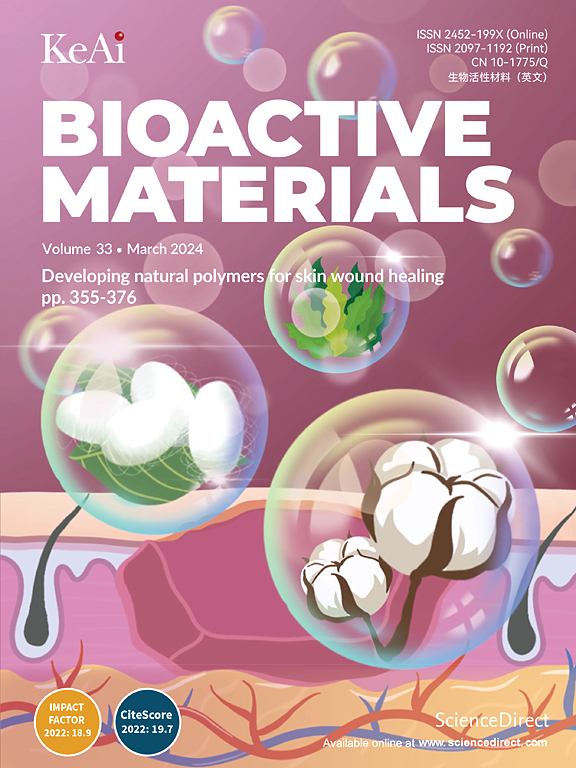Integrated biomimetic bioprinting of perichondrium with cartilage for auricle reconstruction
IF 18
1区 医学
Q1 ENGINEERING, BIOMEDICAL
引用次数: 0
Abstract
The construction and regeneration of tissue-engineered auricles are pacesetters in tissue engineering and have realized their first international clinical application. However, the unstable regeneration quality and insufficient mechanical strength have become significant obstacles impeding its clinical promotion. The perichondrium is indispensable for the nutritional and vascular supply of the underlying cartilage tissue, as well as for proper anatomical functioning and mechanical performance. This study presents a novel strategy for integrated construction of bioengineered perichondrium with bioprinted cartilage to enhance the regeneration quality and mechanical properties of tissue-engineered auricles. Simulating the anatomical structure of the native auricle designs a sandwich construction model containing bilateral perichondrium and intermediate cartilage, employing a photocrosslinkable acellular cartilage matrix and gelatin bionics matrix microenvironment, applying co-cultured auricular chondrocytes and adipose-derived stem cells creates functional cell populations, designing hatch patterns imitates microscopic arrangement structures, utilizing sacrificial materials forms interlaminar network traffic to enhance the tight connection between layers, and finally, assessing the regenerative quality of the constructs explores their feasibility and stability. The multi-level and multi-scale biomimetic construction strategy overcomes the technical limitation of the integrated construction of perichondrium-wrapped auricles and realizes biomimicry in morphology, structure, and biomechanics. Altogether, this study provides a technical reference for the hierarchical construction of complex tissues and promotes the clinical translation and application of engineered tissues or organs.

求助全文
约1分钟内获得全文
求助全文
来源期刊

Bioactive Materials
Biochemistry, Genetics and Molecular Biology-Biotechnology
CiteScore
28.00
自引率
6.30%
发文量
436
审稿时长
20 days
期刊介绍:
Bioactive Materials is a peer-reviewed research publication that focuses on advancements in bioactive materials. The journal accepts research papers, reviews, and rapid communications in the field of next-generation biomaterials that interact with cells, tissues, and organs in various living organisms.
The primary goal of Bioactive Materials is to promote the science and engineering of biomaterials that exhibit adaptiveness to the biological environment. These materials are specifically designed to stimulate or direct appropriate cell and tissue responses or regulate interactions with microorganisms.
The journal covers a wide range of bioactive materials, including those that are engineered or designed in terms of their physical form (e.g. particulate, fiber), topology (e.g. porosity, surface roughness), or dimensions (ranging from macro to nano-scales). Contributions are sought from the following categories of bioactive materials:
Bioactive metals and alloys
Bioactive inorganics: ceramics, glasses, and carbon-based materials
Bioactive polymers and gels
Bioactive materials derived from natural sources
Bioactive composites
These materials find applications in human and veterinary medicine, such as implants, tissue engineering scaffolds, cell/drug/gene carriers, as well as imaging and sensing devices.
 求助内容:
求助内容: 应助结果提醒方式:
应助结果提醒方式:


